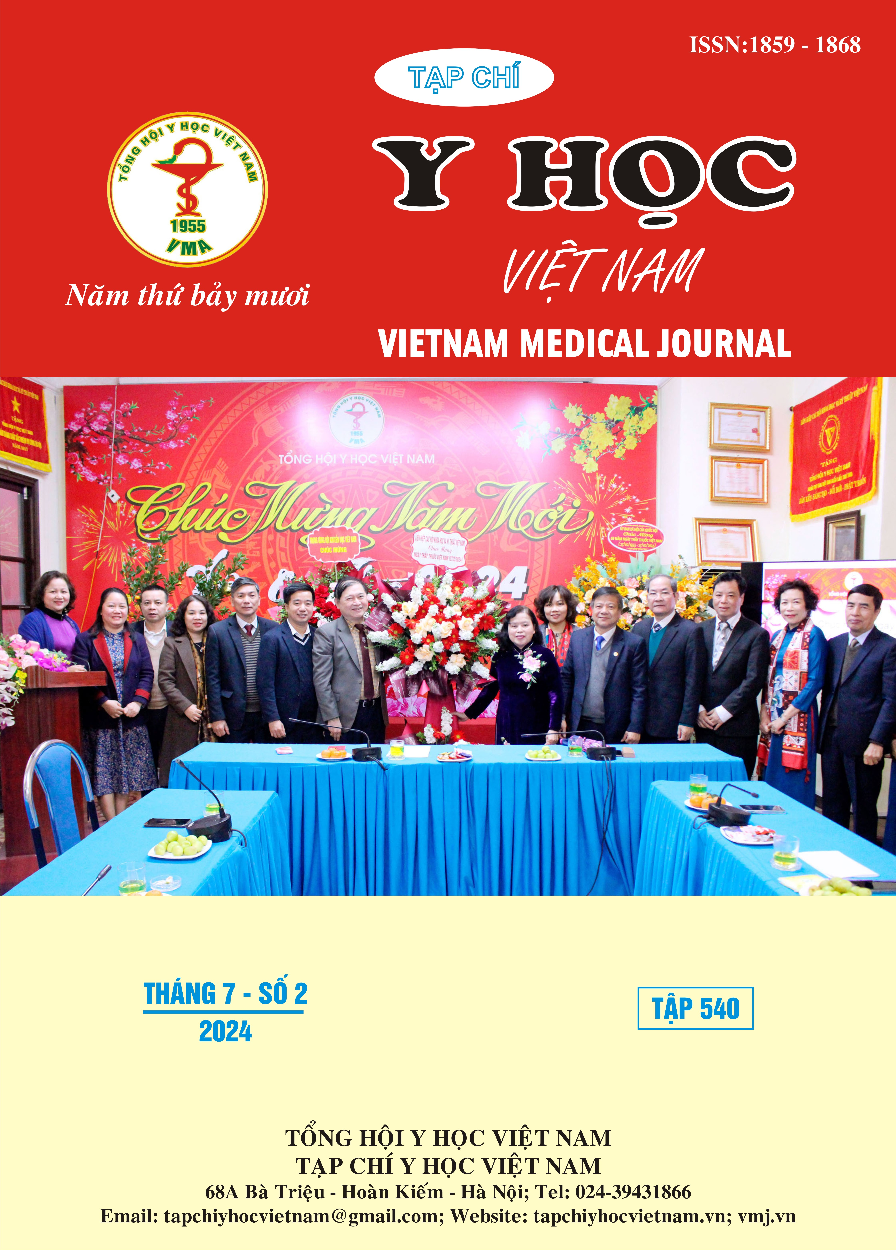THE ROLE OF COMPUTED TOMOGRAPHY IN THE DIAGNOSIS AND TREATMENT APPROACH OF SOLID ORGAN INJURIES IN ABDOMINAL TRAUMA IN CHILDREN AT VIETNAM NATIONAL CHILDREN'S HOSPITAL FROM JANUARY 2021 TO DECEMBER 2023
Main Article Content
Abstract
Purpose: To describe the imaging features of injuries and evaluate the role of computed tomography (CT) in diagnosing and guiding treatment strategies for solid organ injuries in children. Materials and methods: A descriptive cross-sectional study, including 67 children diagnosed with solid organ injuries using CT. Patients were ≤ 16 years old. Results: A total of 67 children ≤ 16 years old were diagnosed with solid organ injuries, with a mean age of 6.93±3.80. The most common age group affected was < 6 years old (41.8%). The incidence of solid organ injuries was higher in males than females (male/female ratio was 1.9/1). The most common cause was traffic accidents. Localized abdominal pain due to trauma was a common symptom (44.7%). Signs of abrasion, edema, and bruising on the abdominal wall were indicative and suggestive of organ injury (37.3%). Clinical laboratory tests showed leukocytosis and neutrophilia are common in solid organ injuries, while reductions in red blood cells, hematocrit, and hemoglobin were common in severe trauma cases and were factors in guiding treatment method selection. The most frequently injured organ was the liver (44.8%), followed by the spleen (23.8%), kidneys (19.4%), and pancreas (12%). Isolated organ injuries were prevalent (86.6%). The typical imaging features of liver, spleen, and kidney injuries on CT were contusions and lacerations with a rate of 84.7%. Pancreatic injuries on CT were predominantly characterized by lacerations, with a high rate of 87.5%. Type III injuries were the most common in children with solid organ injuries, accounting for 47.8%. The treatment of solid organ injuries in children was primarily non-surgical management, accounting for 91%, and surgical treatment was 9%. Among those undergoing surgery, the most common operation was splenectomy, with three patients making up 50% of all surgical cases of solid organ injury and accounting for 18.75% of all spleen injuries. Conclusion: Solid organ injuries in children are commonly encountered, with traffic accidents being the primary cause. CT scan with contrast is an important imaging modality for detecting organ injuries, classifying the grade of injuries, and guiding treatment approaches.
Article Details
Keywords
solid organ injuries, children, computed tomography.
References
2. Evaluation of intra-abdominal solid organ injuries in children - Ayse Basaran, Seda Ozkan
3. Multislice computed tomography in blunt abdominal trauma - Walter Mauritz and Patrick Weninger
4. Blunt splenic injury: Use of a Multidetector CT–based Splenic Injury Grading System and Clinical Parameters for Triage of Patients at Admission - Nitima Saksobhavivat và cộng sự
5. Blunt Abdominal Trauma: Emergency Contrast-Enhanced Sonography for Detection of Solid Organ Injuries - Massimo Valentino và cộng sự
6. Pediatric Blunt Abdominal Trauma - Stephen Wegner và cộng sự
7. Imaging Children with Abdominal Trauma - Carlos J. Sivit
8. Blunt Abdominal Trauma Patients: Can Organ Injury Be Excluded without Performing Computed Tomography? - Pierre A. Poletti và cộng sự
9. Chấn thương bụng ở trẻ em – Sách ngoại nhi lâm sàng- trang 96- 109- Trương Nguyễn Uy Linh, Hồ Trần Bản và Lê Hoàng Tùng.


